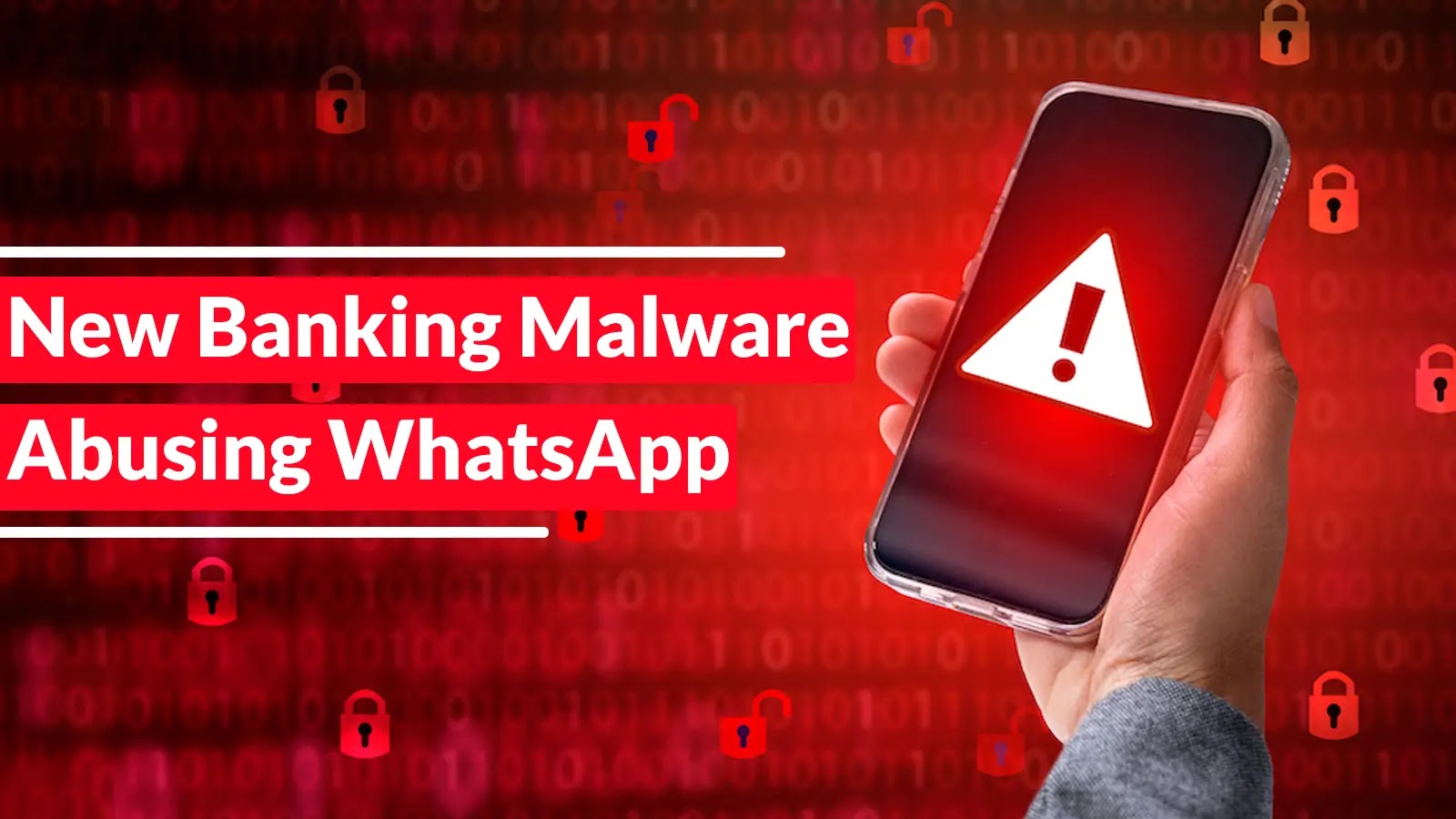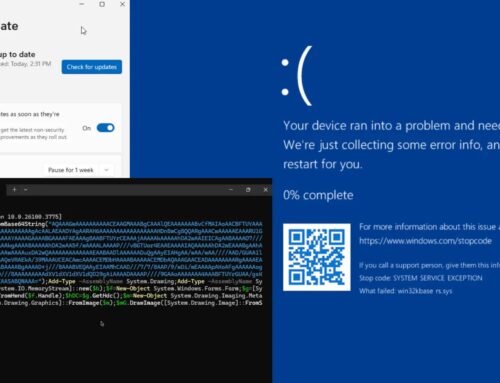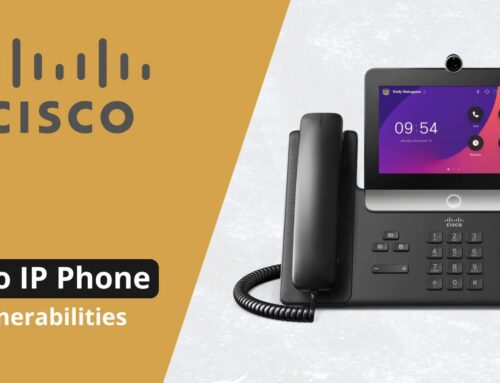
New Banking Malware Abusing WhatsApp to Gain Complete Remote Access to Your Computer
Urgent Warning: Maverick Banking Trojan Exploits WhatsApp for Full System Takeover
A new and aggressive banking Trojan, dubbed Maverick, poses a significant threat to financial security, particularly within Brazil. This sophisticated malware is leveraging the ubiquitous messaging platform WhatsApp as its primary distribution channel, granting attackers complete remote access to compromised systems. Recent data highlights the alarming scale of this campaign, with thousands of users targeted and tens of thousands of infection attempts blocked in a short period. Understanding Maverick’s tactics and implementing robust defenses are paramount for protecting your digital assets.
Maverick Unleashes Financial Mayhem via WhatsApp
Discovered in mid-October 2025, the Maverick banking Trojan campaign quickly escalated, demonstrating a high degree of sophistication and reach. Cybersecurity solutions detected and blocked over 62,000 infection attempts within its first ten days of activity, primarily targeting users with Portuguese-language lures. This malware’s choice of WhatsApp is particularly effective, as it exploits the trust users place in the platform and the ease with which malicious links or files can be shared among contacts.
Unlike traditional banking Trojans that might focus solely on credential harvesting, Maverick aims for a much broader compromise: complete remote access. This level of access allows attackers to not only steal banking information but also monitor user activity, install additional malware, and ultimately seize control of the victim’s computer. The implication is severe, extending beyond financial fraud to potential identity theft and broader system compromise.
How Maverick Operates: A Multi-Stage Attack
The attack chain for Maverick typically begins with a deceptive message distributed via WhatsApp. These messages are meticulously crafted in Portuguese, often impersonating legitimate entities or offering enticing content to trick users into clicking a malicious link or downloading an infected file. Once a user engages with the malicious content, the infection process initiates.
While specific technical details of Maverick’s execution are still being analyzed, typical banking Trojan attack flows often involve the following stages:
- Phishing/Social Engineering: The initial WhatsApp message acts as the lure.
- Malicious Download: The embedded link leads to the download of a disguised executable or script.
- Persistence Mechanism: The malware establishes a foothold on the system, often by modifying registry keys or creating scheduled tasks to ensure it restarts with the system.
- Command and Control (C2) Communication: Maverick contacts its C2 server to receive instructions and exfiltrate stolen data.
- Remote Access Capabilities: This is Maverick’s defining feature, allowing attackers to directly control the compromised machine.
The threat landscape is constantly evolving, and Maverick represents a dangerous trend where threat actors are adapting their distribution methods to common communication channels, making detection and prevention more challenging.
Remediation Actions and Proactive Defense
Given Maverick’s ability to achieve full remote access, immediate and comprehensive remediation is critical. Proactive measures are the best defense against such sophisticated threats.
- Isolate Infected Systems: If an infection is suspected, immediately disconnect the affected computer from the network to prevent further compromise and lateral movement.
- Full System Scans: Utilize reputable antivirus and anti-malware solutions to perform deep scans and remove all detected threats. Consider multiple scanners for thoroughness.
- Password Reset: All passwords, especially for online banking, email, and social media, should be immediately changed from a known clean device. Enable Multi-Factor Authentication (MFA) wherever possible.
- Operating System and Software Updates: Ensure that your operating system, web browsers, and all installed software are kept up-to-date with the latest security patches. This mitigates vulnerabilities that malware might exploit.
- Educate Users: Conduct regular security awareness training, emphasizing the dangers of clicking unknown links or downloading attachments from suspicious sources, even if they appear to come from trusted contacts on platforms like WhatsApp.
- Backup Data: Maintain regular, secure backups of all critical data. In the event of a full system compromise, this can significantly reduce data loss.
Essential Tools for Detection and Mitigation
Leveraging the right security tools is fundamental in combating advanced threats like Maverick. Here are some categories of tools that can assist in detection, analysis, and mitigation:
| Tool Category | Purpose | Examples/Key Features |
|---|---|---|
| Endpoint Detection and Response (EDR) | Real-time monitoring, threat detection, and automated response capabilities on endpoints. | CrowdStrike Falcon, Microsoft Defender for Endpoint, SentinelOne |
| Antivirus/Anti-Malware | Signature-based and heuristic detection of known and unknown malware. | Bitdefender, ESET, Kaspersky, Malwarebytes |
| Network Intrusion Detection/Prevention Systems (NIDS/NIPS) | Monitoring network traffic for suspicious activity, C2 communications, and blocking malicious connections. | Snort, Suricata, commercial firewall solutions with IPS features |
| Security Information and Event Management (SIEM) | Aggregating and analyzing security logs from various sources to identify attack patterns and anomalies. | Splunk, IBM QRadar, Elastic SIEM |
| Email/Messaging Security Gateways | Filtering malicious links and attachments at the gateway level before they reach end-users. | Proofpoint, Mimecast, Avanan |
Protecting Your Digital Fort: Key Takeaways
The emergence of the Maverick banking Trojan serves as a stark reminder of the persistent and evolving nature of cyber threats. Its exploitation of WhatsApp to gain full remote access significantly escalates the risk, underscoring the need for heightened vigilance and robust security practices. Always exercise extreme caution with unsolicited messages and links, regardless of the perceived sender. Keep your systems updated, deploy effective security tools, and prioritize user education. A multi-layered defense strategy, combining technological safeguards with informed human behavior, remains your strongest shield against sophisticated attackers.





